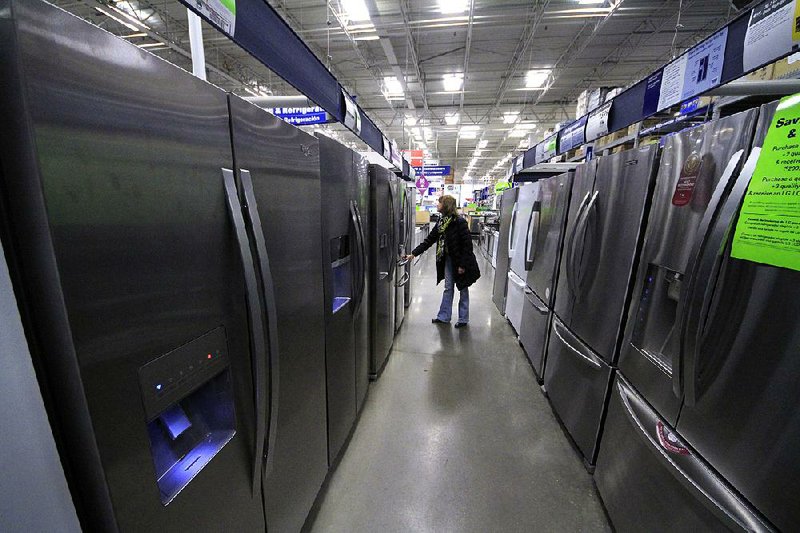WASHINGTON - Orders to U.S. factories for long-lasting manufactured goods rose in February by the most in three months, the Commerce Department said Wednesday, but a key category that reflects business investment fell sharply. This category fell 1.3 percent, the second setback in three months.
Economists said the weakness in business investment might reflect the severe winter, which led some industries to put modernization and expansion plans on hold.
“Demand momentum has slowed somewhat,” said Ryan Wang, an economist at HSBC Securities USA Inc. in New York. “The bad weather and the winter probably aggravated the downturn somewhat.”
Overall orders for durable goods rose 2.2 percent after a 1.3 percent drop in January. The February increase was driven by a surge in orders for commercial aircraft, a category that tends to fluctuate sharply from month to month.
Joel Naroff, chief economist at Naroff Economic Advisors, said he expected economic growth to slow sharply in the January-March quarter, reflecting the disruptions caused by the harsh weather, before recovering in coming months.
“The rebound could be huge once spring actually appears,” Naroff said.
A 13.6 percent jump in demand for commercial aircraft followed a 22.1 percent plunge in the previous month.
One bright spot in Wednesday’s report was demand for autos. Orders for motor vehicles and parts climbed 3.6 percent in February, the biggest gain since the same month last year.
Pent-up demand has increased sales of cars, appliances, electronics and other equipment. The average age of cars on the road is at a record 11.4 years, according to data from IHS Automotive. Low interest rates and increasing consumer confidence also are helping dealerships and manufacturers.
Demand also rose for primary metals such as steel. Orders for machinery fell 1.5 percent. Demand for computers fell 0.5 percent and for communications equipment 2.7 percent.
Many economists think manufacturing output will strengthen in spring, reflecting better weather after winter storms disrupted production at some factories.
Cleveland-based Parker-Hannifin Corp., a maker of gears, pumps and valves, is among companies seeing steady, if unspectacular, gains in demand.
“We’re growing very well in the Asia-Pacific region right now, slow and steady in the U.S., slow and steady in Europe,” Jon Marten, its chief financial officer, said at a March 18 investor conference. “This is a coming out of a recession like there’s no period that we can really compare this to in the past. This is something that has been just a slow, steady grind.”
The Institute for Supply Management’s gauge of manufacturing activity expanded faster in February as companies received more orders and boosted their stockpiles. Its manufacturing index rose to 53.2 in February from 51.3in January. That only partially reversed a five-point drop in January. Any reading above 50 indicates that manufacturing is expanding.
The institute’s index had risen for six straight months until falling slightly in December and taking a big tumble in January as heavy snow caused factories to close.
The bad weather depressed purchases of homes and autos, causing factories to trim their production schedules for autos, furniture and appliances in January. But the Federal Reserve said factory output rebounded in February by the largest amount in six months.
Analysts estimate that the economy slowed to an annual growth rate below 2 percent in the January-March period. But they’re forecasting that the growth rate will rebound to around 3 percent for the rest of the year. If that occurs, it will be the fastest annual economic growth since 2005. Information for this article was contributed by Martin Crutsinger of The Associated Press, and Lorraine Woellert and Ainhoa Goyeneche of Bloomberg News.
Business, Pages 25 on 03/27/2014
